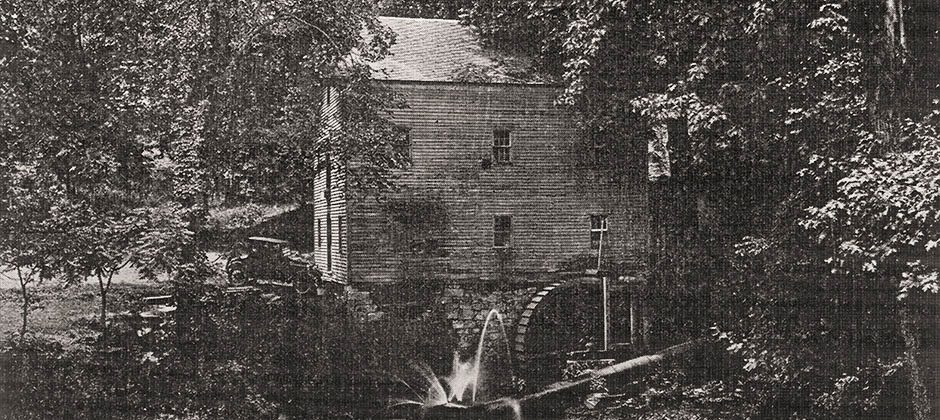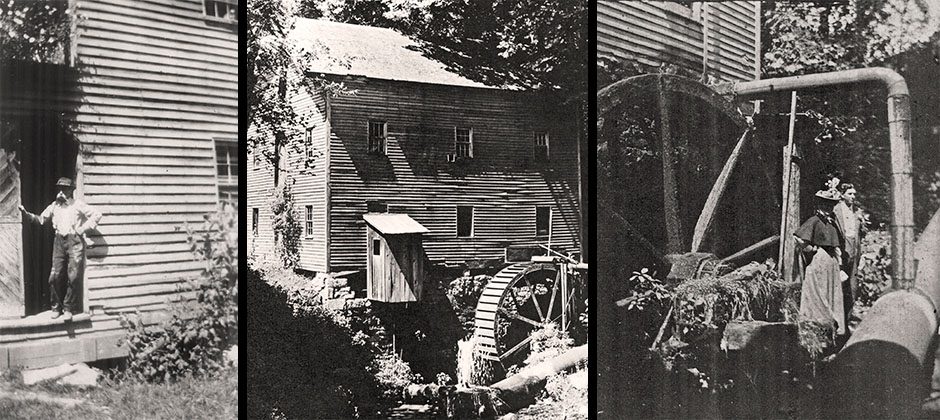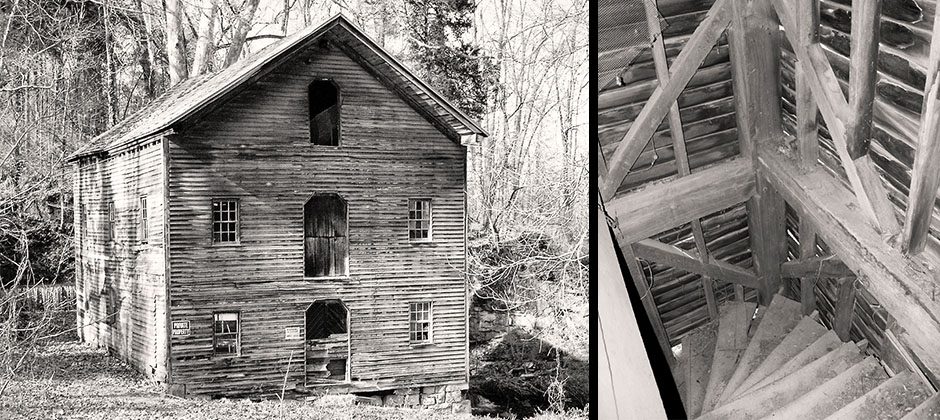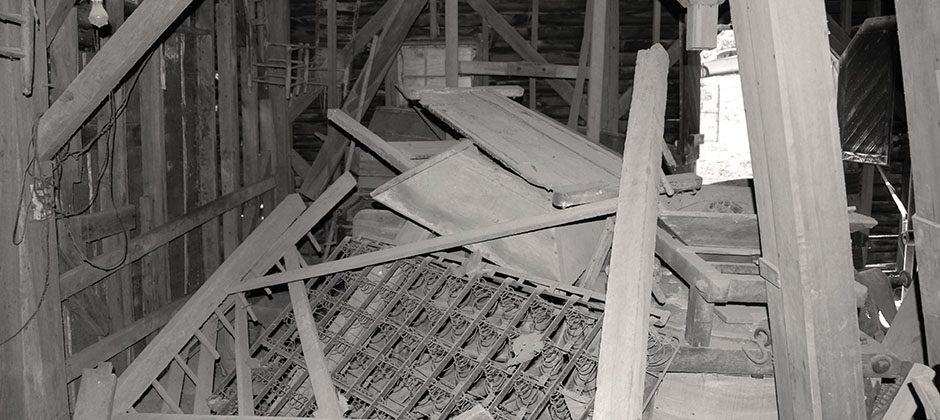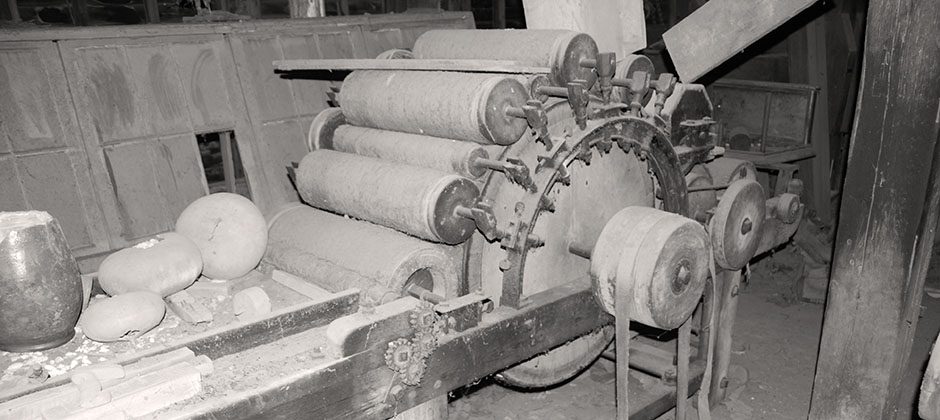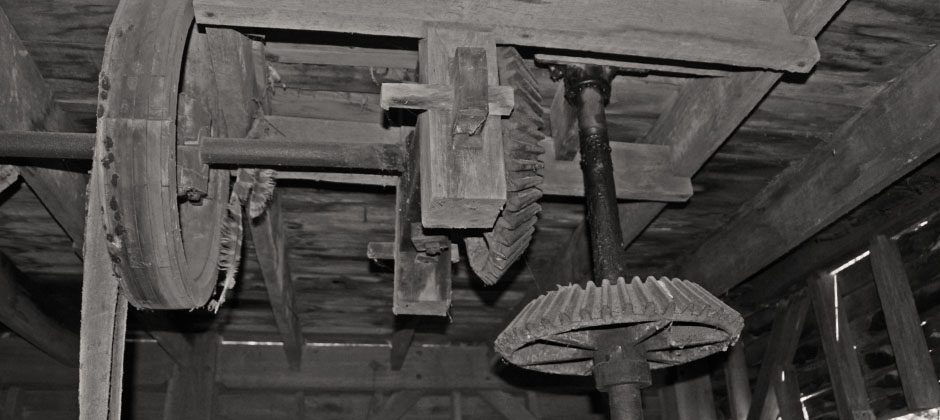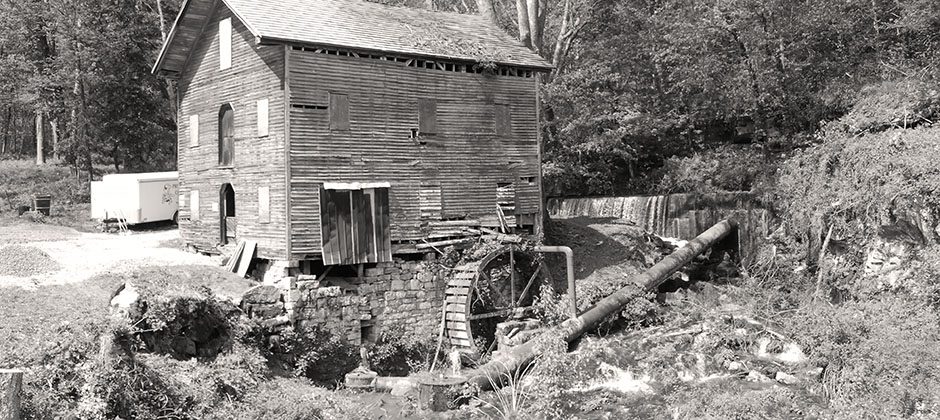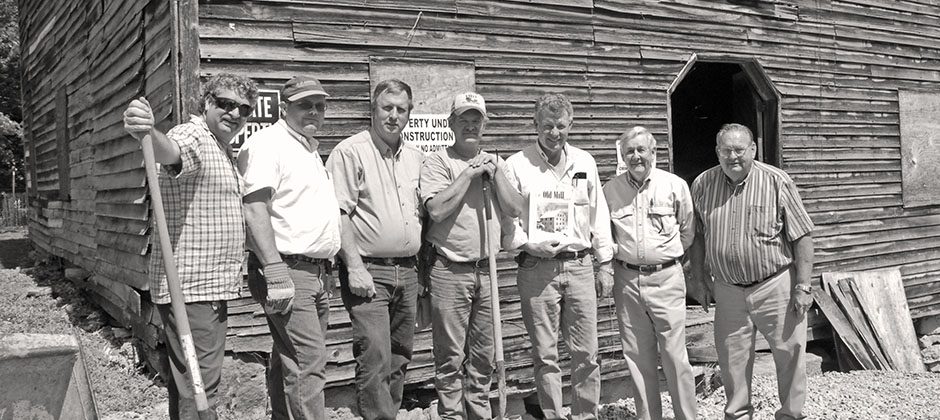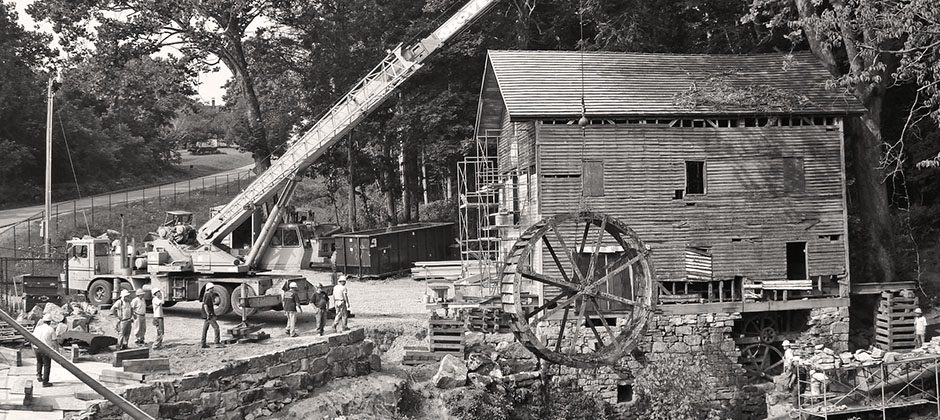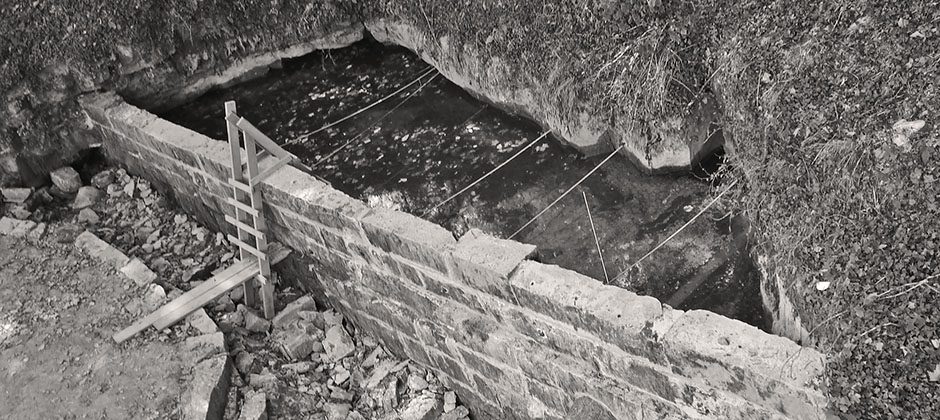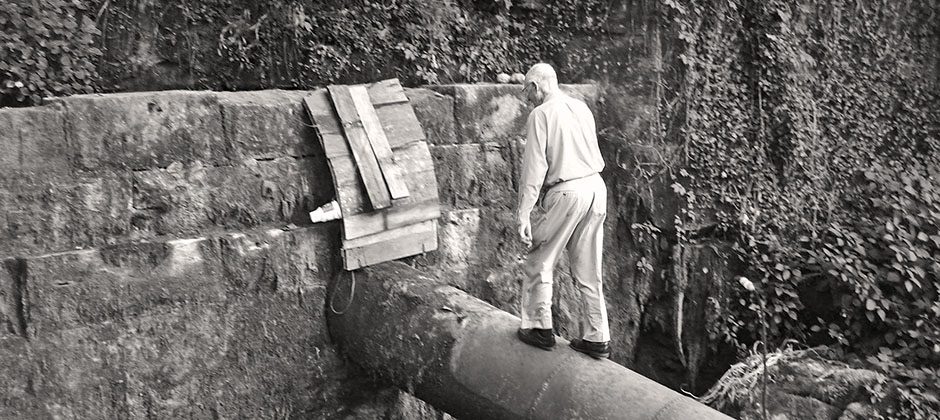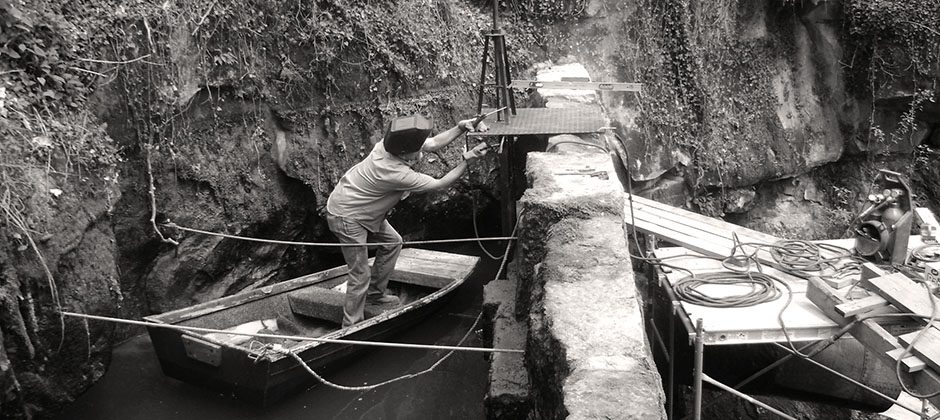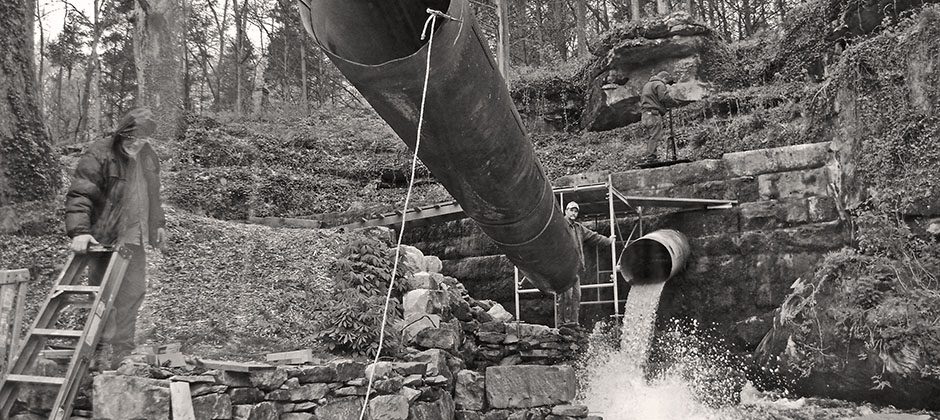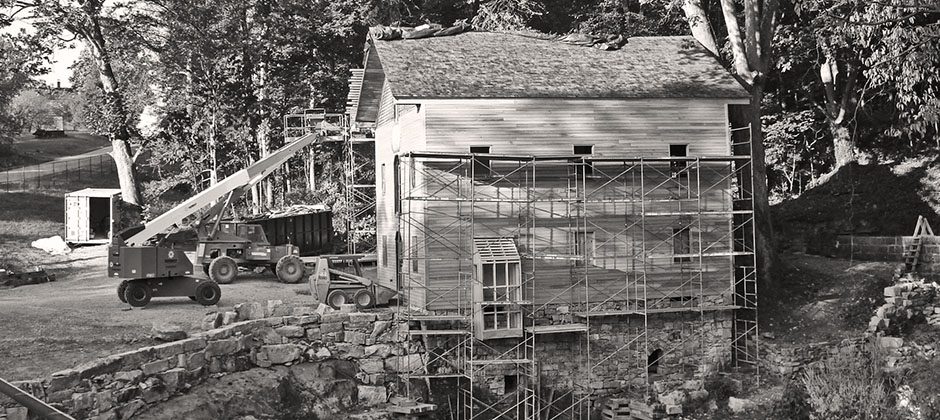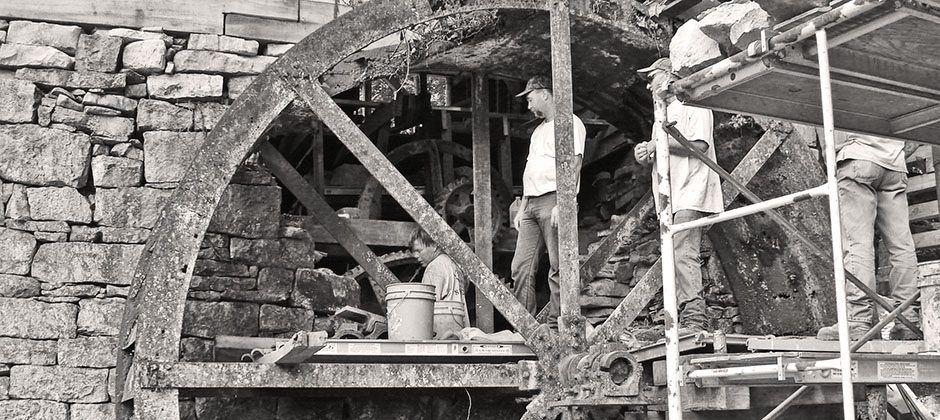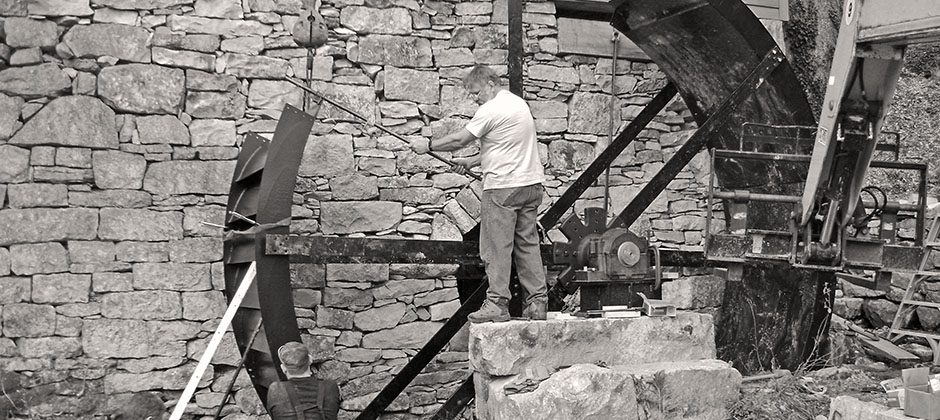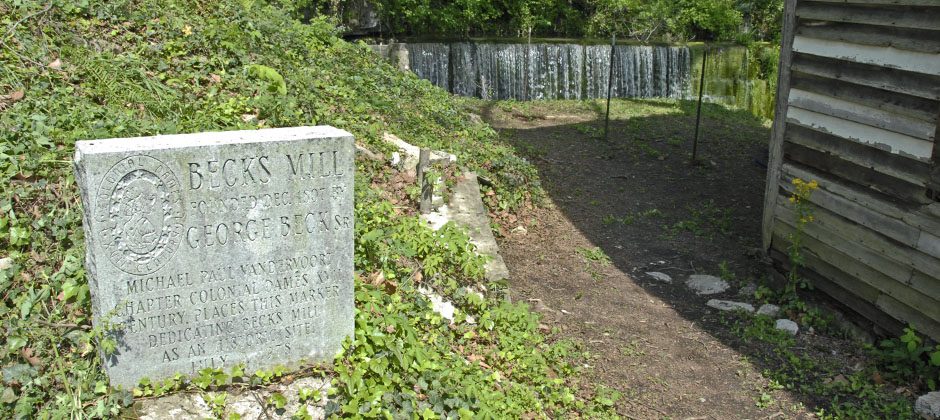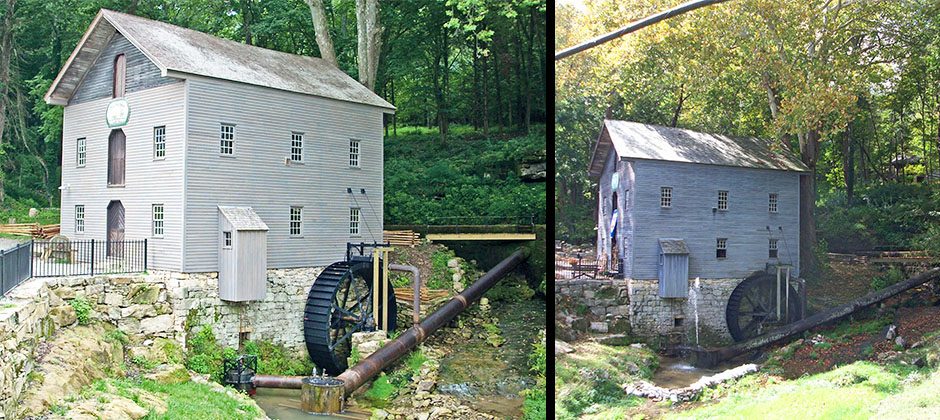George Beck claimed the land the mill currently rests on in 1807, nine years before statehood. The land was discovered to be a Native American burial ground. George was believed to have been the first non-native on the grounds.
Beck’s Mill is roughly 6 miles from downtown Salem, Indiana. Salem, founded in 1814, serves as the county seat for Washington County. The entire downtown is listed on the National Register of Historic Places.
The current mill is one of three builds. The first mill, built of stone and logs in 1808, was 11 x 11 feet. The second mill was 20 x 30 feet and built circa 1825. The current mill was even more prominent, with a second floor in 1864. The mill operated for 26 years while its turbine (waterwheel) ran for 24 hours a day.
The turbine was handcrafted in Philadelphia. It is assumed that the turbine was likely placed on a barge that traveled down the Ohio River, then up the Blue River, and finally transported the remainder of its journey by horse or oxen pulling a wagon.
Bill and Gayle Cook, founders of Cook Medical, a global medical device manufacturing company, and CFC Properties, a real estate development and property management company, with their son Carl, discovered the mill during one of their typical Sunday drives of Indiana’s countryside. Their countryside drives inspired the couple to publish the book, “A Guide to Southern Indiana,” in 1972. The wrap-around cover’s first image was of Beck’s Mills before it was renovated. The book’s popularity allowed it to be updated and re-published several times up to 1982.
The mill was in desperate need of being stabilized and made re-operational again. It sat deteriorating for many years and appeared close to falling into the creek. Only vandals dared to enter the unsafe structure to swipe furnishings and equipment. Several times, Bill and Gayle approached the owners, the Anderson family, offering to repair it, but their request was always denied. Connections made with the Friends of Beck’s Mill, a non-profit group dedicated to operationalizing the grist mill and representing pioneer life in Washington County, Indiana, eventually presented the opportunity to preserve the mill when it was listed as one the Most Endangered Historic Places in 2005 – 2006.
Preservation efforts began in May 2007. George Ridgway, Architect of Cook Group, a global, privately-owned collection of businesses spanning medical devices, life sciences, business services, property management, and resorts, provided engineering guidance. At the same time, Pritchett Bros, a Bloomington contracting company, carried out the restoration services. The building was raised using a jack, and the foundation stone was laid historically accurately using old photographs. Luckily, many of the original building pieces were still on site. The crew used tooling estimated to be nearly 200 years old. Piece by piece, the structure came apart. Repairs were made and, in some cases, rebuilt so everything would function properly.
The mill is fed by what is believed to be Indiana’s second largest spring-to-waterfall from a cave roughly a half mile within the countryside. George Ridgeway shared…
“I went back into the cave, probably about halfway, until the water got about chest deep. I wanted to see where the water came from. If you go up on top and know where the cave outlet is, you can walk about 50 feet away and see where it goes down a sinkhole and swirls. It’s coming from a lot of different sources.”
The land’s elevation is one of the highest in Indiana, 946 feet above sea level. The mill is fully powered by water. George Beck dammed up the water from the cave and installed a pipe that shoots water from the cave’s pool to the top of the turbine spinning it counterclockwise. George Ridgeway credited the technology process as being impressive for its time.
Preservation efforts took 11 months, and it was operational again just before the 200th anniversary of the first mill being built. The mill was opened to the public on September 20, 2008. Due to the volunteer efforts put forth by the Friends of Beck’s Mill in keeping up with the property, Bill and Gayle purchased and donated 79 acres of surrounding land.
Today, the scenic area showcases an array of natural springs, cliffs, quarries, and several hiking trails open to the public. On a seasonal basis, the mill now operates as a museum where volunteers welcome weekend visitors in costume. Visitors can grind corn and purchase small bags of corn flour.
Beck’s Mill is listed as one of Indiana’s most significant historic landmarks and is listed on the National Register of Historic Places. Bill and Gayle believed in being responsible preservationists by ensuring historical structures were given a purpose and could be self-sustaining because every building cannot be a museum.

